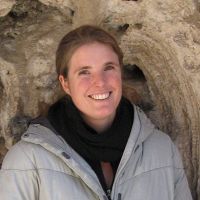Symanski et al., 2017
Distribution of ancient carbon in buried soils in an eroding loess landscape
Symanski, L.M.; Mason, J.A.; De Graaff, M.A.; Berhe, A.A.; Marin-Spiotta, E. (2017)
Fall Meeting, American Geophysical Union, December 2017. Abstract B41E-2007
-
Reynolds, INVESTIGATOR
-
Sierra, INVESTIGATOR
Abstract
Understanding the processes that contribute to the accumulation and loss of carbon in soils and the implications for land management is vital for mitigating climate change. Buried soils or paleosols that represent former surface horizons can store more organic carbon than mineral horizons at equivalent depths due to burial restricting microbial decomposition. The presence of buried soils defies modeled expectations of exponential declines in carbon concentrations with depth, especially in locations where successive depositional events lead to multiple buried soil layers. Buried soils are found in a diversity of depositional environments across latitudes and without accounting for their presence can lead to underestimates of regional carbon reservoirs. Here we present data on the spatial distribution of carbon in a paleosol loess sequence in Nebraska, focusing on one prominent paleosol, the Brady soil. The Brady soil has been identified throughout the Central Great Plains and began developing at the end of the Pleistocene and was subsequently buried by loess in the early Holocene (Mason et al. 2003). Preliminary analyses of the Brady soil at its deepest, 6-m below the surface, reveal large differences in the composition and degree of decomposition of organic matter from the modern soil. We sampled along burial and erosional transects to characterize spatial variability in the depth of Brady soil from the modern landscape surface and to determine how these differences may alter the amount and composition of organic carbon. A more accurate determination of the spatial extent and heterogeneity of buried soil carbon will improve regional estimates of carbon reservoirs. This assessment of its variability across the landscape will inform future planned work on the vulnerability of ancient carbon to disturbance.
Citation
Symanski, L.M.; Mason, J.A.; De Graaff, M.A.; Berhe, A.A.; Marin-Spiotta, E. (2017): Distribution of ancient carbon in buried soils in an eroding loess landscape. Fall Meeting, American Geophysical Union, December 2017. Abstract B41E-2007.
Explore Further


